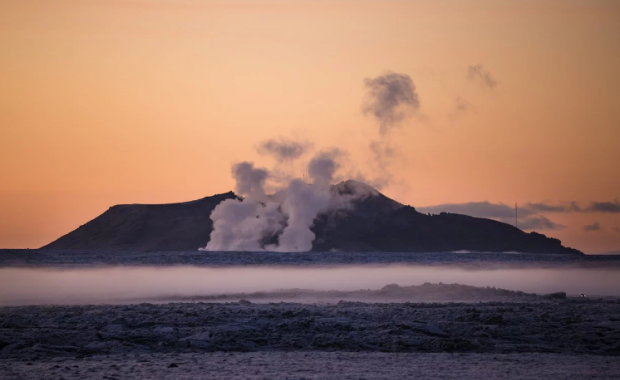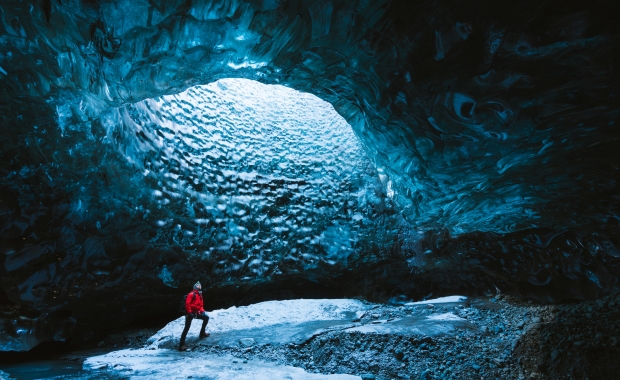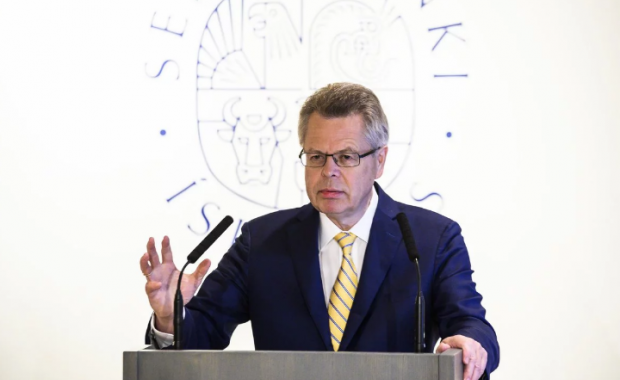By Neil McMahon
Even though it’s over forty years ago, I can still vividly remember many of my first impressions of Iceland. Having to go though a US military checkpoint when driving out of Keflavik international airport, the blonde-complexioned, homogeneous local population speaking at breakneck speed a language I didn’t understand a single word of. The corrugated roofed houses in an array of colours, and the big American cars I’d only seen in movies. There were the amazing swimming pools with their hot pots and, since beer was banned, my initiation into drinking the hugely popular local schnapps, brennivín, aka the Black Death, mixed with Coke. Here I was, then, in Iceland of the early seventies, a young Irish lad just graduated in archaeology, registered for a year’s postgraduate work at the country’s national university.
The poor cousin
The Monday after my arrival I went to the university’s office and enquired as to where the archaeology department was. A rather bemused secretary told me there was no such department, archaeology was merely a subject taught within the history department. And so, for the year, I attended lectures in history and got an introduction to archaeological studies in Iceland.
I could clearly sense that archaeology was the poor cousin of history and Icelandic literature. In a country boasting such a rich literary heritage, where many, up until recently, firmly believed the medieval family sagas to be gospel truth, there seemed no need to look elsewhere for verification as to how life was in the past. The few archaeological excavations that had been carried out were done by Danes and one Icelander educated in Sweden, Kristján Eldjárn, who went on to become the Republic´s third president in 1968.
Number of noteworthy excavations
Fast forward to 2015 and you encounter an Iceland that’s in total contrast to what it was in the seventies, with perhaps the single exception of the amazing swimming pools and the painted corrugated roofs. The American military have left, over eight percent of Reykjavik´s population is foreign, the big American gas-guzzling cars have all been replaced by fuel-efficient Japanese, German, and South Korean models, beer is no longer banned and nobody would dream of mixing brennivín and Coke. And on the academic front, Icelanders are at last willing to question the veracity of the sagas and archaeology is now a respectable and popular department on a par with history in the university. How times have changed!
Within Iceland’s academic sector, there’s a clear recognition that archaeology is a multi-faceted discipline that can provide valuable insights into the country’s past. Thanks to state funding and a new generation of dedicated Icelandic archaeologists, often teaming up with foreign universities, a number of noteworthy excavations have been carried out in recent years that visitors to Iceland should definitely consider checking out.
What the four particularly interesting sites below have in common is the light they shed on the unique building techniques used by the early settlers. Because of a shortage of wood and stone, Icelanders ingeniously used sods of turf like bricks to build their houses. In a subtle and seamless way, these houses seemed like an extension of nature itself. This technique has survived in an unbroken line right down to the present day and even in Reykjavik you can see modern buildings that incorporate turf roofing into the design. In the 20th-century rush to modernise,
Icelanders almost ashamedly turned their backs on turf houses, associating them with a past racked by poverty and hardship. Today however, there is a growing realisation that the turf house is a remarkable construction that is well worthy of a place in the history of world architecture.

Eiríkstaðir in West Iceland
Excavations here in 1997-99 revealed a modest-sized turf-built longhouse said to be the homestead of the notorious Viking, Erik the Red, discoverer and namer of Greenland. If this is so, then it’s also the birthplace of his equally famous son, Leif the Lucky, discoverer of America. Based on the archaeological evidence, a full-scale replica house was built a stone’s throw away in 1999. Open to visitors, it gives a fascinating insight into life in the Viking Age. The guided tour on offer is both informative and highly entertaining.

Skriðuklaustur in East Iceland
This Augustinian monastery was the last to be established in Iceland in 1493, before they were all closed in 1552 with the coming of the Reformation. An extensive three-year excavation starting in 2002 revealed the monastery’s unusually large structure, as well as numerous skeletal remains and artifacts. The evidence showed that the monastery was not just a centre of prayer and education, but also served as a hospital and hospice. The internationally known Icelandic writer Gunnar Gunnarsson built an impressive house at Skriðuklaustur in the 1940s. Today the manor house is a cultural centre that offers exhibitions, cultural events, and guided tours around the house and the archaeological site.

Stöng Commonwealth Farm in South Iceland
Here at Stöng is a fine reconstruction of one of over 20 houses in this once-fertile valley, destroyed in a massive eruption of the volcano Hekla in 1104. Several houses were excavated by a team of Nordic archaeologists in 1939 and the reconstruction of the best-preserved one in 1974 was part of the nation’s celebration of eleven hundred years of settlement. To commemorate Iceland’s adoption of Christianity in 1000 AD, a turf-clad stave church was erected nearby in the year 2000.

The Settlement Exhibition 871±2 in Reykjavik
Located right smack in the city’s oldest street, Aðalstræti, this museum provides information on the findings of an archaeological excavation from 2001 of a tenth-century Viking longhouse, one of the first turf houses built in Iceland. Some even suggest that this could well be the homestead of the country’s first permanent settler, Ingólfur Arnarson, who is reputed to have set up home hereabouts in the 870s, thus the unique name of the museum. In an imaginative and informative way, the exhibition uses multimedia technology to recreate what life was like for those early settlers.
By Neil McMahon
Even though it’s over forty years ago, I can still vividly remember many of my first impressions of Iceland. Having to go though a US military checkpoint when driving out of Keflavik international airport, the blonde-complexioned, homogeneous local population speaking at breakneck speed a language I didn’t understand a single word of. The corrugated roofed houses in an array of colours, and the big American cars I’d only seen in movies. There were the amazing swimming pools with their hot pots and, since beer was banned, my initiation into drinking the hugely popular local schnapps, brennivín, aka the Black Death, mixed with Coke. Here I was, then, in Iceland of the early seventies, a young Irish lad just graduated in archaeology, registered for a year’s postgraduate work at the country’s national university.
The poor cousin
The Monday after my arrival I went to the university’s office and enquired as to where the archaeology department was. A rather bemused secretary told me there was no such department, archaeology was merely a subject taught within the history department. And so, for the year, I attended lectures in history and got an introduction to archaeological studies in Iceland.
I could clearly sense that archaeology was the poor cousin of history and Icelandic literature. In a country boasting such a rich literary heritage, where many, up until recently, firmly believed the medieval family sagas to be gospel truth, there seemed no need to look elsewhere for verification as to how life was in the past. The few archaeological excavations that had been carried out were done by Danes and one Icelander educated in Sweden, Kristján Eldjárn, who went on to become the Republic´s third president in 1968.
Number of noteworthy excavations
Fast forward to 2015 and you encounter an Iceland that’s in total contrast to what it was in the seventies, with perhaps the single exception of the amazing swimming pools and the painted corrugated roofs. The American military have left, over eight percent of Reykjavik´s population is foreign, the big American gas-guzzling cars have all been replaced by fuel-efficient Japanese, German, and South Korean models, beer is no longer banned and nobody would dream of mixing brennivín and Coke. And on the academic front, Icelanders are at last willing to question the veracity of the sagas and archaeology is now a respectable and popular department on a par with history in the university. How times have changed!
Within Iceland’s academic sector, there’s a clear recognition that archaeology is a multi-faceted discipline that can provide valuable insights into the country’s past. Thanks to state funding and a new generation of dedicated Icelandic archaeologists, often teaming up with foreign universities, a number of noteworthy excavations have been carried out in recent years that visitors to Iceland should definitely consider checking out.
What the four particularly interesting sites below have in common is the light they shed on the unique building techniques used by the early settlers. Because of a shortage of wood and stone, Icelanders ingeniously used sods of turf like bricks to build their houses. In a subtle and seamless way, these houses seemed like an extension of nature itself. This technique has survived in an unbroken line right down to the present day and even in Reykjavik you can see modern buildings that incorporate turf roofing into the design. In the 20th-century rush to modernise,
Icelanders almost ashamedly turned their backs on turf houses, associating them with a past racked by poverty and hardship. Today however, there is a growing realisation that the turf house is a remarkable construction that is well worthy of a place in the history of world architecture.
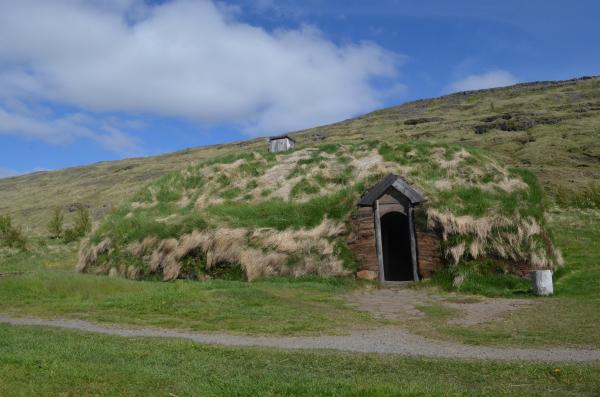
Eiríkstaðir in West Iceland
Excavations here in 1997-99 revealed a modest-sized turf-built longhouse said to be the homestead of the notorious Viking, Erik the Red, discoverer and namer of Greenland. If this is so, then it’s also the birthplace of his equally famous son, Leif the Lucky, discoverer of America. Based on the archaeological evidence, a full-scale replica house was built a stone’s throw away in 1999. Open to visitors, it gives a fascinating insight into life in the Viking Age. The guided tour on offer is both informative and highly entertaining.
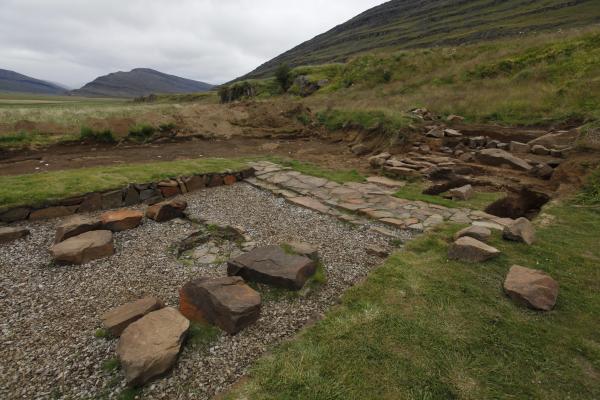
Skriðuklaustur in East Iceland
This Augustinian monastery was the last to be established in Iceland in 1493, before they were all closed in 1552 with the coming of the Reformation. An extensive three-year excavation starting in 2002 revealed the monastery’s unusually large structure, as well as numerous skeletal remains and artifacts. The evidence showed that the monastery was not just a centre of prayer and education, but also served as a hospital and hospice. The internationally known Icelandic writer Gunnar Gunnarsson built an impressive house at Skriðuklaustur in the 1940s. Today the manor house is a cultural centre that offers exhibitions, cultural events, and guided tours around the house and the archaeological site.

Stöng Commonwealth Farm in South Iceland
Here at Stöng is a fine reconstruction of one of over 20 houses in this once-fertile valley, destroyed in a massive eruption of the volcano Hekla in 1104. Several houses were excavated by a team of Nordic archaeologists in 1939 and the reconstruction of the best-preserved one in 1974 was part of the nation’s celebration of eleven hundred years of settlement. To commemorate Iceland’s adoption of Christianity in 1000 AD, a turf-clad stave church was erected nearby in the year 2000.
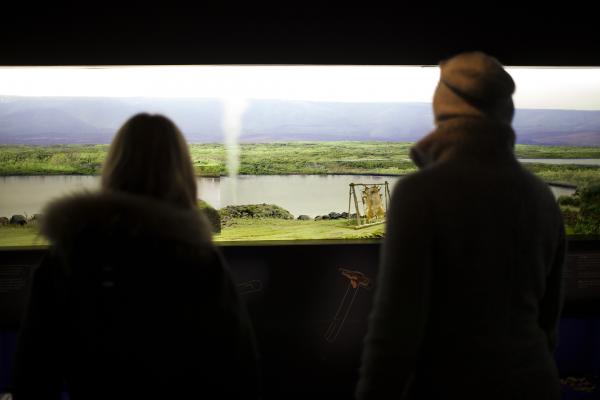
The Settlement Exhibition 871±2 in Reykjavik
Located right smack in the city’s oldest street, Aðalstræti, this museum provides information on the findings of an archaeological excavation from 2001 of a tenth-century Viking longhouse, one of the first turf houses built in Iceland. Some even suggest that this could well be the homestead of the country’s first permanent settler, Ingólfur Arnarson, who is reputed to have set up home hereabouts in the 870s, thus the unique name of the museum. In an imaginative and informative way, the exhibition uses multimedia technology to recreate what life was like for those early settlers.





